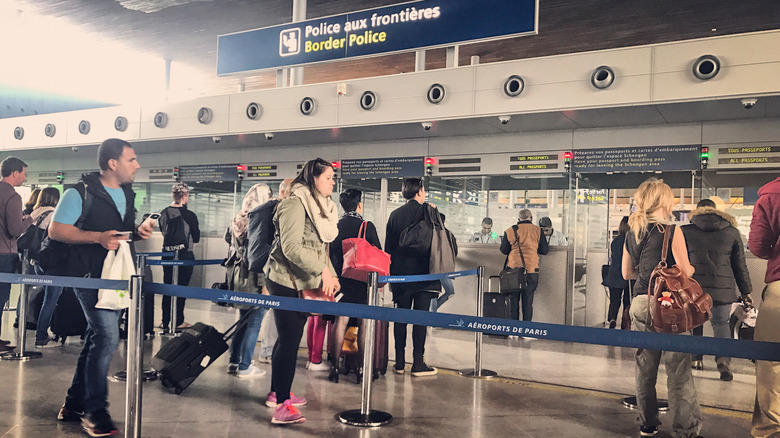Europe Is Upgrading Its Entry/Exit System. Here’s What You Need To Know
4 min read
Sadly, we are getting closer to the end of the travel era where passports full of stamps are a thing of the past. Over the last few years, the European Union (EU) has taken steps to develop two border security systems to safeguard and modernize the borders of EU and Schengen member countries. Both of these, the European Union Entry/Exit System (EES) and the European Travel Information and Authorization System (ETIAS) were expected to be fully operational several years ago. However, due to concerns of a few EU nations, these external border control systems may initially be slow and gradually phased in throughout the EU in 2024 and 2025.
The Schengen area borders will be going digital to speed up and secure entry into many European countries. Once implemented, the new EES system will register the arrival and departure of non-EU and non-Schengen area nationals visiting for short stays, deemed as 90 days in 180 days. At passport control, each traveler’s passport information, entry date, photograph, and fingerprints (except for children under 12) will be recorded and checked against criminal and immigration violations, stored for three years per EU regulations, and made accessible to Europol and individual member countries’ local law enforcement agencies.
Once implemented, travelers will be able to save time by registering their arrival in advance through a mobile application or a kiosk. Those who often visit Europe will also be able to speed through passport control more quickly, as border officials will only need to verify their identity at the border. Once EES is fully operational, travelers who refuse to have their data collected will be refused entry.
Read more: 18 Best Ways To Help You Get Through Airport Security Faster
ETIAS, Europe’s Version Of An eVisa
Per the EU’s Official ETIAS website, the bloc’s travel authorization will come into effect within the first half of 2025, although no specific date has been mentioned. If you’re itching for a few more relics, you still have time to book a last-minute trip to Europe (and your last European passport stamps).
ETIAS is an electronic visa waiver, similar to the ESTA for visitors to the U.S., or an ETA or eVisa for many countries. Once ETIAS is live, it will be required for passport holders of over 60 countries (including the U.S., Canada, U.K., Australia, New Zealand, and much of the Western Hemisphere) visiting the EU, apart from Ireland, for short stays. A map of the countries requiring an ETIAS authorization can be found here. Like most eVisas, the issuing process should normally be quick for the vast majority of applicants, however, it may take a few days. In the future, apply early for your ETIAS to avoid disappointment.
ETIAS is valid for three years, with multiple entries, meaning travelers can come and go as they please. However, the maximum length of time you’ll be allowed to stay on an ETIAS is 90 days out of 180 days, whether for business, pleasure, or visiting friends and family. Two caveats–if your passport expires during the three-year window, or your ETIAS will not cover your full length of stay, you will need to reapply for ETIAS before your trip. And, if you are looking to stay longer and jump across some of the world’s best destinations for remote workers in Europe, you will need a visa.
How To Apply For ETIAS
Once ETIAS goes live, applicants can apply through a mobile application or the official website. Adult applicants under 70 years old will be required to pay 7 euros for the application. Applications for children are free, and each person entering the EU will need their own ETIAS.
Since ETIAS is linked to your passport used in the application, a mistake could cause your application to be rejected, or your entry denied. Before submitting your application, make sure your passport has at least three months of validity past your expected departure date and check over your application carefully, including your passport number, nationality, and name. If you realize there is a mistake in the application after you’ve received your ETIAS, the best remedy is to reapply and correct the mistake in a new application. Within the application, you will need to provide personal information, past travel history, and criminal history, and likely need to include your onward travel plans out of the EU. Do not lie, as it can be grounds for rejection and impact your future travels.
Once ETIAS is running, you can use travel agencies and third parties to apply. However, if you decide to use a third party’s services, be careful to protect your information and be sure to sign a declaration of representation for each application in your party. Even if a third party applies on your behalf, you are still responsible for the information in your application. The U.K. is currently rolling out a similar system. Travelers heading for the EU via train or ferry will pass through EES checks before leaving Britain. However, travelers taking a cruise departing and returning to the U.K. with day trips in EU cities will not be required to undergo EES registration.
Read the original article on Explore.



